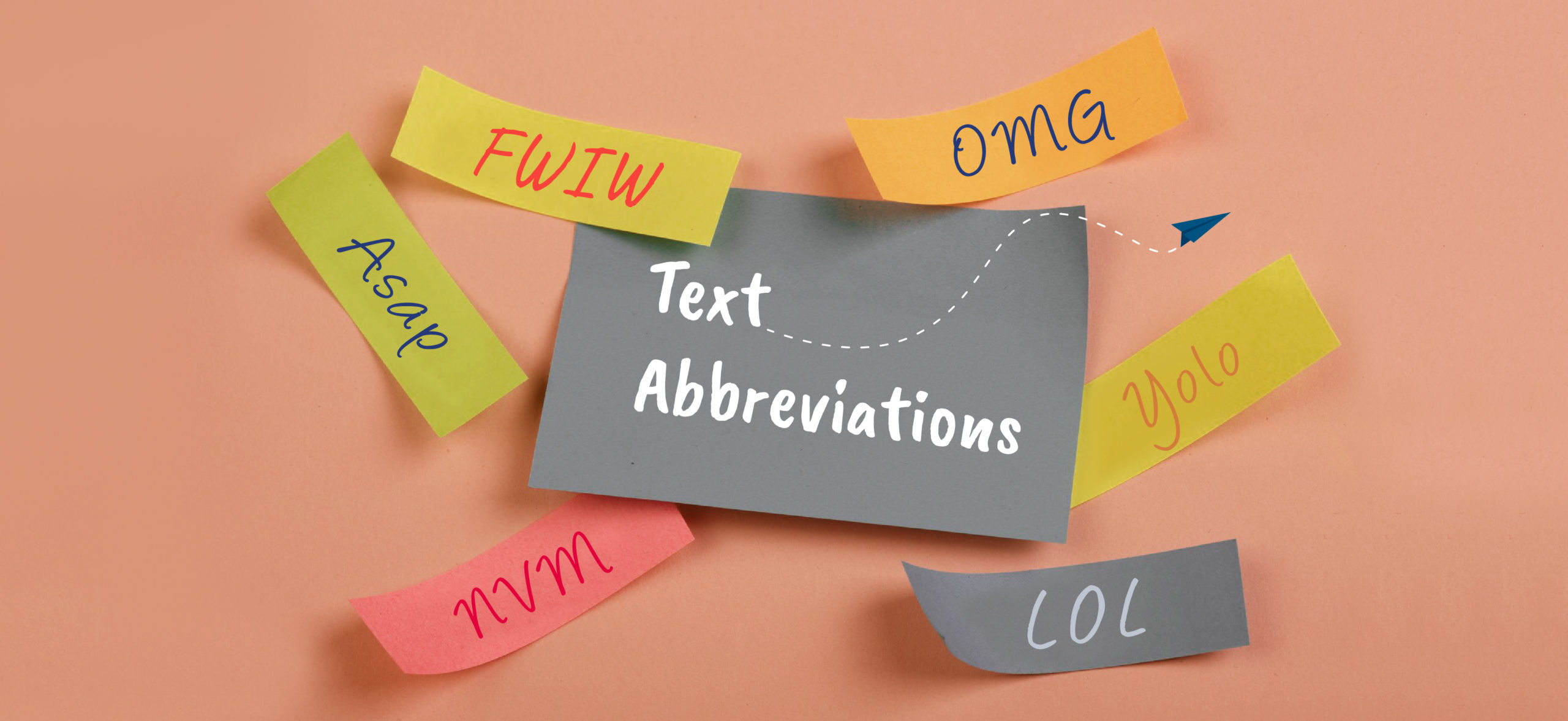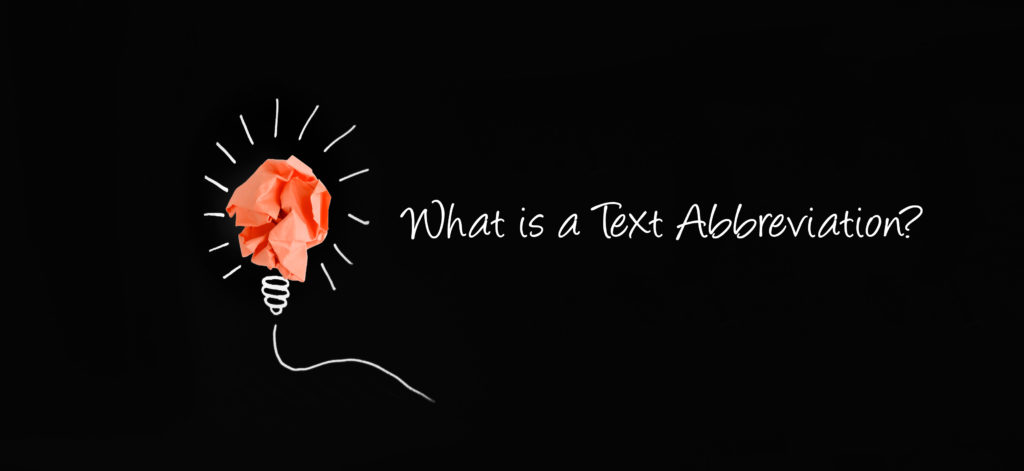
Everyone uses text abbreviations one way or another. “GTG,” “BRB,” these are all common abbreviations people use to send a message to a friend or family member. It helps limit character counts and is quick and easy to send.
While it may seem informal from a business perspective, it really isn’t. It’s a discrete way to make messages more personal and create relationship with customers. Besides abbreviations, there’s also a list of texting slang.
What is a Text Abbreviation?
A text abbreviation is a shortened form of a word or phrase that is commonly used in electronic communication, such as text messages, instant messaging, and social media. These abbreviations are often created by taking the first letter of each word in a phrase and combining them to form a new word or by shortening a word by removing certain letters. For example, “BRB” is an abbreviation for “be right back,” and “TY” is an abbreviation for “thank you.”
Text abbreviations are often used to save time and space when sending messages, and they have become an integral part of electronic communication. Many text abbreviations are widely understood and used in everyday communication. But it’s good to keep in mind that they may not be universally understood, so it’s good to explain them to other person if they are not familiar with them.
Why Should Businesses Use Text Abbreviation?
Businesses use text abbreviations for a variety of reasons, such as:
- Efficiency: Abbreviations can save time and effort when sending or responding to messages, especially when communicating with a large number of people.
- Consistency: Using the same abbreviations across a company can help maintain consistency and ensure that everyone is on the same page.
- Space limitations: In some contexts, such as SMS or social media, messages are limited by the number of characters that can be used. Abbreviations can help to save space and get the message across within these constraints.
- Familiarity: Some abbreviations have become so common that they are widely understood and can be used to convey meaning quickly and efficiently.
- Professionalism: Depending on the industry, using certain text abbreviations can be seen as professional and demonstrate a level of expertise.
However, it is important for businesses to be aware that using abbreviations can also lead to confusion, particularly if the recipients are not familiar with them. The more common ones (that we will list below), you can assume that the majority of people know what it means. However, you will risk having the few customers who do not understand abbreviation.
So it’s good to use them in internal communication or communication within the same industry. Businesses need to use appropriate and common abbreviation, where ever applicable and necessary.
Texting Abbreviation Examples
Here are a list of common text abbreviations. The most popular text abbreviations are also commonly used among family members and friends.
- ASAP – as soon as possible
- BRB – be right back
- BTW – by the way
- CUL8R – see you later
- FWIW – for what it’s worth
- FYI – for your information
- HBD – happy birthday
- IDK – I don’t know
- JK – just kidding
- LMK – let me know
- LOL – laughing out loud
- OMW – on my way
- OMG – oh my god
- TTYL – talk to you later
- TY – thank you
- YOLO – you only live once
- GM – Good Morning
- GN – Good Night
- NVM – nevermind
- NP – no problem
Using these text abbreviations come with a disclaimer. Keep in mind that if you’re unsure if an abbreviation should be used or not, you must likely shouldn’t use it. You would rather spell out the abbreviation than to use it in an inappropriate or wrong context. More importantly, always keep the context of the conversation in mind. If you are dealing with something more serious in nature, you may want to stay away from using abbreviations with your customers.

Tips for Businesses to Send Text Abbreviations
Here are a few tips for businesses to consider when using common text abbreviations in electronic communication:
- Keep it simple: Stick to commonly used text abbreviations that are widely understood to avoid confusion.
- Be aware of your audience: Consider who you are communicating with and whether or not they are likely to be familiar with the text abbreviations you are using.
- Use them sparingly: Overuse of text abbreviations can make your messages difficult to understand, so use them only when necessary.
- Be professional: Even though text abbreviation are widely used, it’s good to be professional and use them appropriately in business communication. Avoid using text abbreviations that can be considered unprofessional or inappropriate. Additionally, use them sparingly.
- Keep it consistent: Use the same text abbreviations across your company to maintain consistency and ensure that everyone is on the same page.
- Explain the abbreviation: If you use an abbreviation that the recipient may not be familiar with, it’s good to explain it first. If you feel like the explanation would be too long, it is better to not use the abbreviation either.
- Use them where applicable: Abbreviation are useful in situations where you have limited number of characters to convey your message, such as in SMS, messaging and social media etc.
- Be prepared to expand: Be prepared to explain or expand on any text abbreviations that you use, in case the recipient is not familiar with them. The good news is, once you’ve exaplained it once to a customer, you won’t have to do it again!
By following these tips, businesses can use popular text abbreviations in electronic communication effectively, while minimizing confusion and maintaining professionalism.
The Bottom Line
Overall, in the world of texting and business texts, text abbreviations are not just welcomed, they are encouraged to be use. Due to its ability to get a message across and save time for the sender, using common text abbreviations with your customer shouldn’t be an issue. Better yet, it helps foster a personal and close connection with your customers. Don’t hesitate to reach out to our team at Text M Main Number to learn more about our platform or reach out to our customer support team.

0 Comment